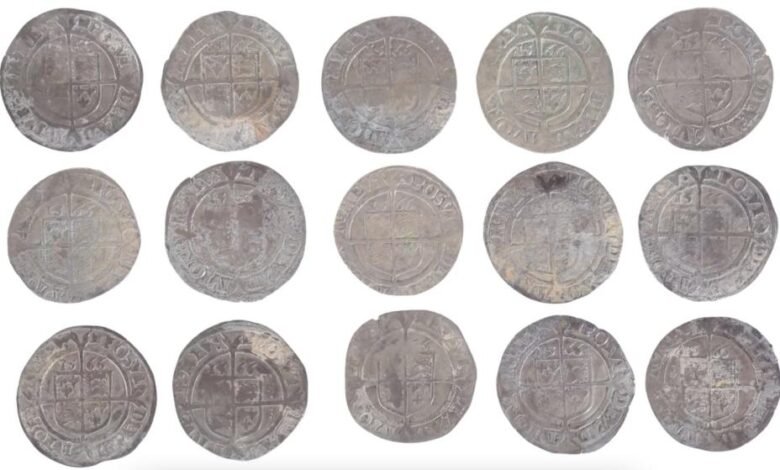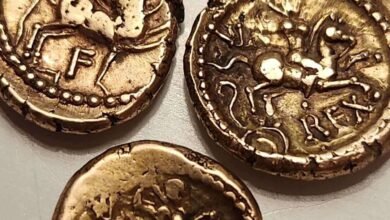A couple renovating their kitchen finds a $75,000 treasure trove of 17th-century coins

-
A British couple found a trove of coins from the 17th century while renovating their house.
-
The collection includes silver shillings of Elizabeth I and gold coins of Charles I.
-
Further proof that a house holds an amazing and valuable secret.
A British couple’s home renovation project turned into a profitable venture when they discovered a $75,000 treasure under their kitchen floor.
Robert and Betty Fooks were renovating their farmhouse in the south of England when they discovered a valuable collection of 17th-century coins under their kitchen.
Fooks’ South Poorton Farm is a 17th century cottage in a small hamlet in West Dorset.
The couple purchased the nave in 2019 and removed the modern concrete floor as part of the extensive renovation.
The coins were discovered when digging two feet deep to expand the lower area.
The discovery is the latest historic and valuable discovery made by chance in people’s backyards, basements, subfloors, behind walls and attics, and proof that your home could be hiding an amazing secret.
Betty Fooks, an NHS health consultant, told the Guardian: “It’s a 400-year-old house so there was a lot to do. We removed all the floors and ceilings and restored it to its stone walls.”
“One evening my husband was digging with a pickaxe when he called and said they had found something. He put all the coins in a bucket. If we hadn’t lowered the floor, they would still be hiding there,” she said.
The collection was given to the British Museum for identification and cleaning.
Dukes Auctioneers said on its website that the British Museum believes the coins were once deposited around 1642/44. Around this time the English Civil War began and there was intense conflict in the Poorton area.
The 1,000-coin “Poorton Coin Hoard” went under the hammer at Duke’s Auctioneers on April 23.
The collection, which includes Elizabeth I silver shillings, Charles I gold coins, James I silver sixpence coins and more, was estimated to be worth £35,000 or $43,600 before the auction.
However, the cache exceeded all expectations when it sold for £60,000 ($75,000), the BBC reports.
According to the BBC, the Fooks couple said the money would help pay off their mortgage.
Business Insider contacted Duke’s Auctioneers for comment.
Spectacular discoveries


In 2019, another couple in England made a similar discovery.
An unnamed couple unearthed a hoard of 264 English gold coins dating from 1610-1727 while excavating the kitchen floor.
It is believed that the treasure once belonged to a merchant family who made their fortune in Baltic trade.
The collection was auctioned in 2022 for £754,000 or $842,330.
Coins are small and easy to hide and can be found in many secret treasures discovered by unsuspecting homeowners. Other lost artifacts ranged from first editions of superhero comics to rare vintage cars.
But one of the most spectacular discoveries was a 16th-century Italian Renaissance masterpiece hidden under an old mattress in an attic in France in 2014.
Judith Beheading Holofernes, believed to be a painting by Caravaggio, was later sold for $170 million.
The unnamed family who shared the stunning stroke of luck reportedly speculated that the work may have been driven out of Italy by an ancestor who fought in Napoleon’s army in the early 19th century.
Read the original article on Business Insider



